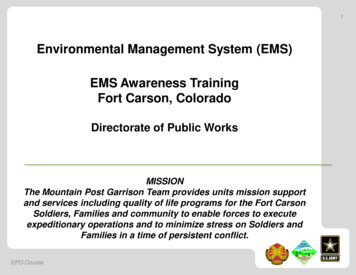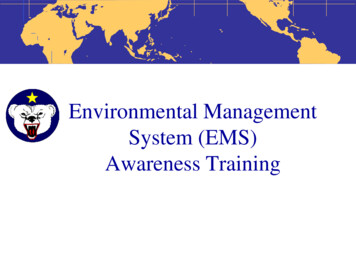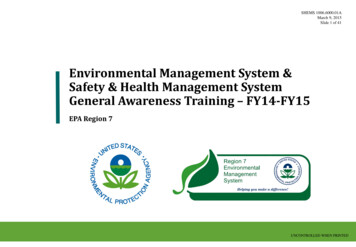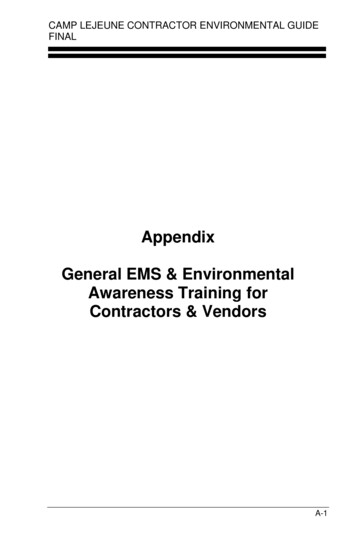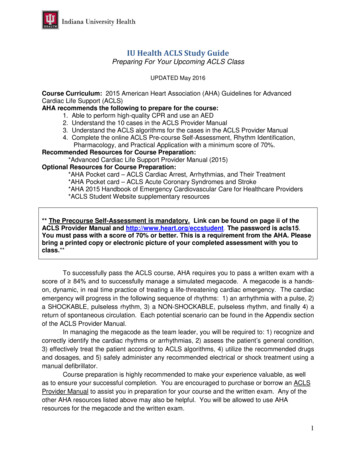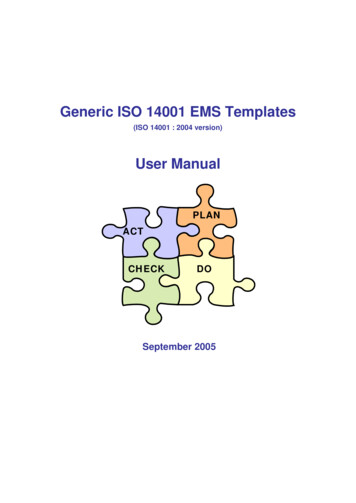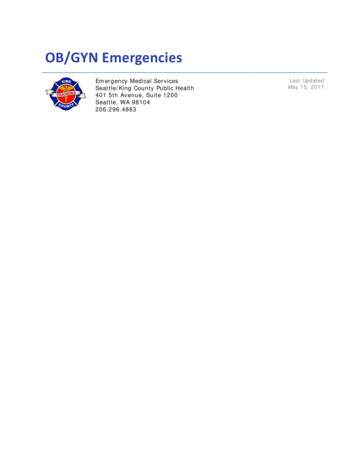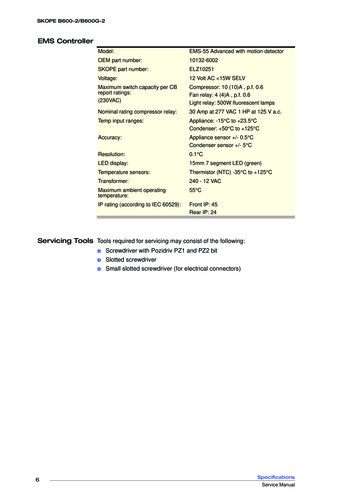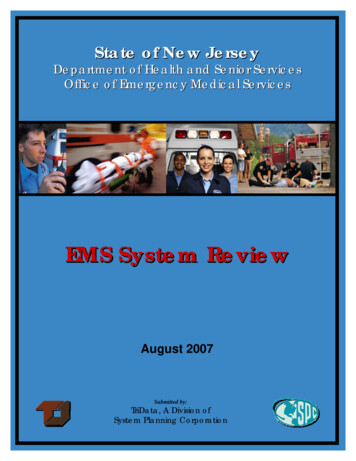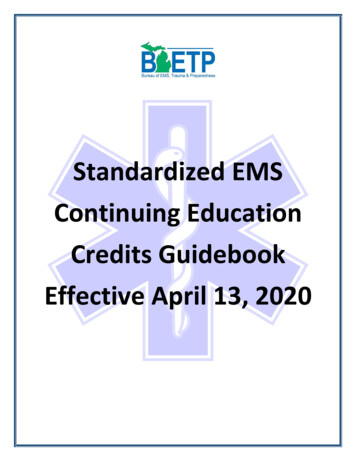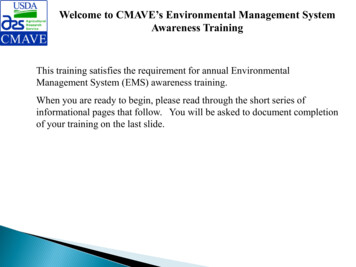
Transcription
Welcome to CMAVE’s Environmental Management SystemAwareness TrainingThis training satisfies the requirement for annual EnvironmentalManagement System (EMS) awareness training.When you are ready to begin, please read through the short series ofinformational pages that follow. You will be asked to document completionof your training on the last slide.
What is an EMS?EMS integrates CMAVE’s environmental objectives with its overallmission, so that environmental considerations can become a routine factorin all of our operations.An EMS provides the framework for:Developing a system that will consistently address and resolveenvironmental issues.Establishing environmental objectives and targets.Demonstrating continual improvement of the system and ourenvironmental performance.
Why Implement an EMS? It makes good business sense to integrate environmental managementwith our research mission. To demonstrate our commitment to the environment. To improve our environmental performance by managing theenvironmental impacts of our operations. To be in compliance with Executive Order 13693, Planning for FederalSustainability in the next Decade (issued March 19 2015).
Benefits from Implementing an EMSDecreases environmental riskImproves compliance postureImproves relations with regulatorsImproves public perceptionWelcomes employee involvementImplementing an EMS enhances our control and understanding of how ouroperations affect the environment. Through the use of this system, weproactively seek to improve our environmental performance.
Major elements of an EMSThe five major elements of EMS are:Environmental PolicyPlanningImplementation and OperationAssessment and Corrective ActionManagement Review and Improvement
Environmental PolicyCMAVE’s Environmental Policy is a statement of our intentions and principlesin relation to our overall environmental performance. The EnvironmentalPolicy focuses on the following:Commitment to continual improvementCommitment to comply with relevant environmental regulationsCommitment to ensure objectives and targets are metCommunication to all employeesAll employees are required to be aware of CMAVE’s environmental policy. Acopy of the policy is posted in Bldg 11 copy room, Bldg 1 Safety Board andFAMU Break room.
What are environmental aspects and impacts? An environmental aspect is an element of CMAVE’s operations that caninteract with the environment. An environmental impact is any change to the environment resultingfrom CMAVE’s operations. CMAVE’s Safety & Environmental Committee and YOU are responsiblefor identifying environmental aspects/impacts of our operations anddeveloping measures to reduce their negative impact on the environmentwhile still allowing us to perform our mission.
Significant Environmental AspectsDuring the planning stage of CMAVE’s EMS, significant environmental aspectswere identified. Examples of significant environmental aspects for CMAVEinclude:Hazardous waste generationWater consumptionElectrical energy Usage
ObjectivesOur EMS requires us to establish and maintain measurable objectives andtargets for significant environmental aspects.CMAVE’s objectives to minimize significant environmental impacts include:1.Energy Conservation2.Water Conservation3.Establishment of environmentally beneficial landscaping.4.Recycling5.Fossil fuel conservation6.Purchases of environmentally sound goods and services (EPEAT andEnergy Star electronics and appliances).
Corrective and Preventive ActionThe CMAVE Safety & Environmental Committee monitors EMS progressto identify corrective and preventive actions that are necessary to ensureEMS improves.Your help is vital in identifying areas where corrective and preventivemeasures are necessary.
Be aware of and participate in the location’s EMS Comply with federal, state, local, and ARS environmentalregulations and policies. Continually improve your processes toward a goal of protecting theenvironment and improving environmental performance. Introduce environmental protection and pollution prevention earlyin the planning stages of all new operations. Report problems or concerns to your supervisor and your Safety andEnvironmental Committee Representative.
ContactsIf you have any questions or feedback regarding EMSplease contact the Safety Office or your Safety &Environmental Committee Representative. Yourrepresentatives on CMAVE’s Safety and EnvironmentalCommittee are:John Ohlson (Maintenance), Heidi Burnside (Behavior& Biocontrol Research), Darrell Hall (Imported Fire AntResearch), Greg Allen (Mosquito & Fly Research), SteveWillms (Chemistry), Amy Rowley( Quarantine atCMAVE ) John Mass (FAMU Location), AngelaQuinata (Admin)Your Acting Environmental Management SystemCoordinator is: Heidi Burnside The Director of CMAVEEMS is Kenneth Linthicum
Awareness Training. This training satisfies the requirement for annual Environmental Management System (EMS) awareness training. When you are ready to begin, please read through the short series of informational pages that follow. You will be asked to document completion of your training
